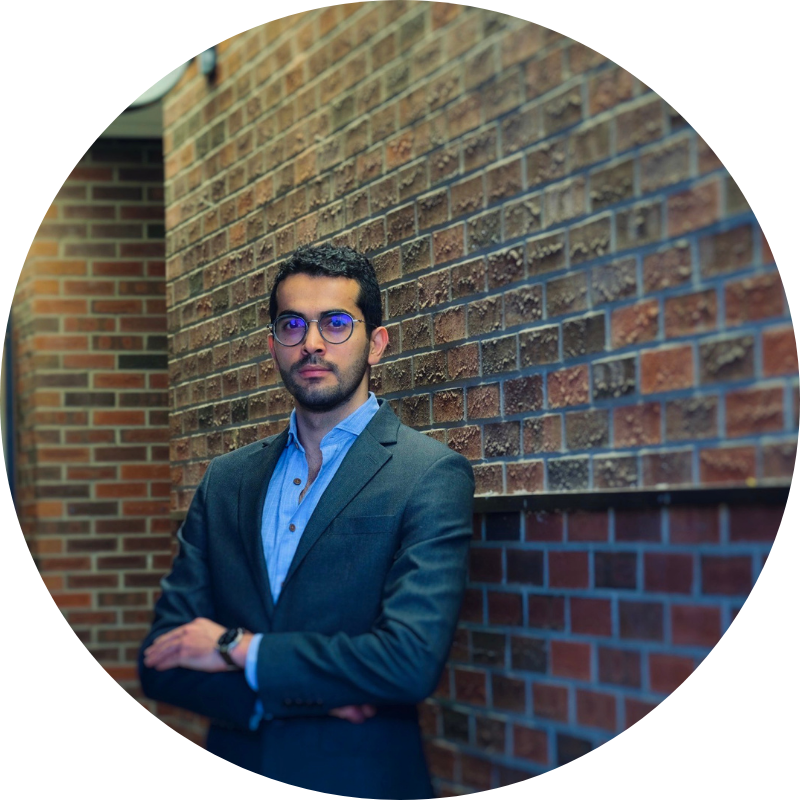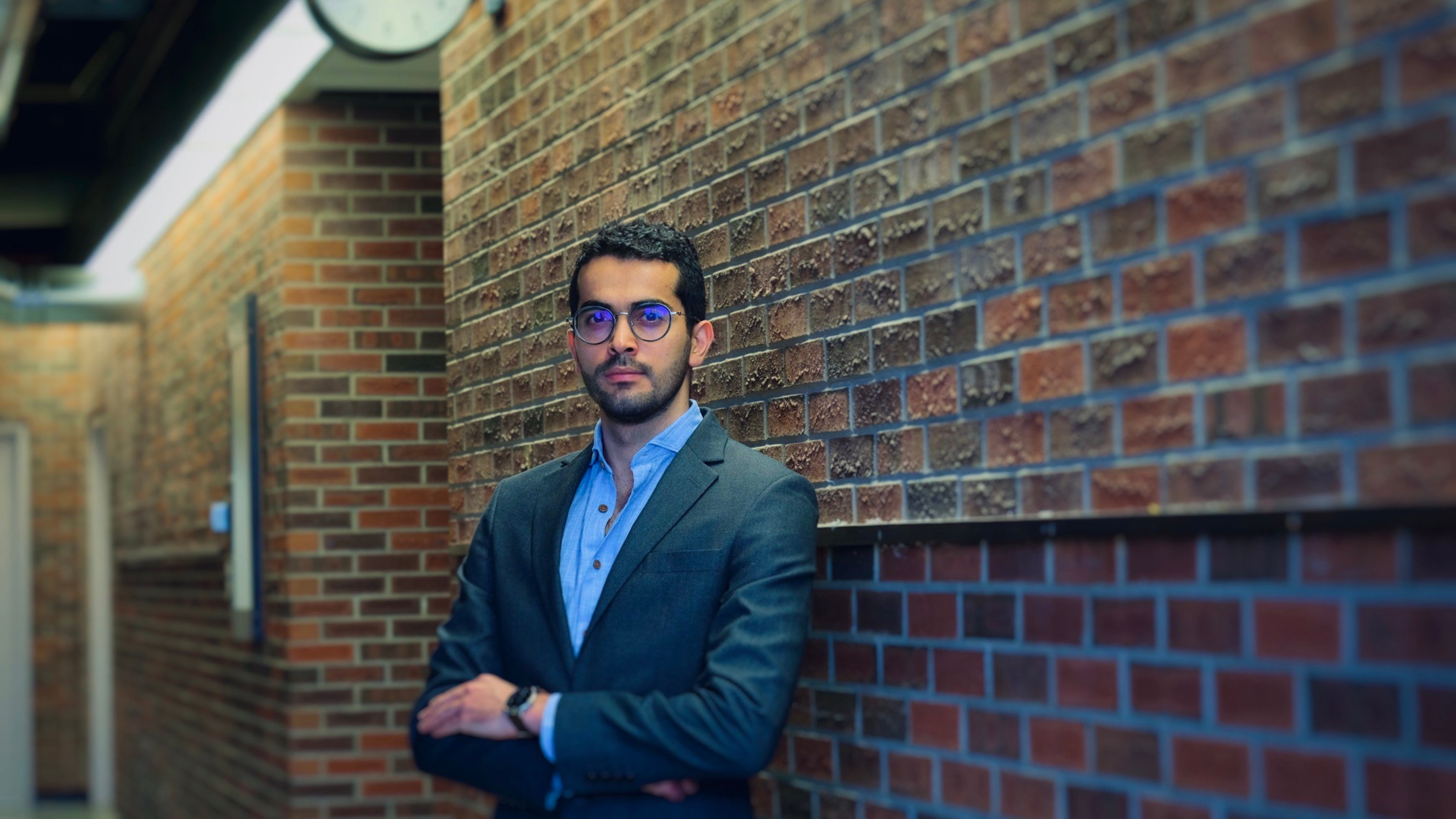How do you describe your work, and the work of the CFD-IAI group, to people who don’t work in your field?
The Computational Fluid Dynamics for Industrial Application and Innovation (CFD-IAI) group is part of the CFD Laboratory. It is based in the Faculty of Engineering’s Mechanical Engineering Department and operates under supervision of Dr. Carlos F. Lange. Our group is involved in the development of new computational models that can be used as a design tool for industrial applications through evaluating, developing and accessing thermo-fluid processes. The main application is the modelling of flashing in-flow control devices used in the oil industry, as well as in desalination processes.
We are providing a design tool for industrial applications that can save time and lower costs while also contributing to environmental sustainability. Coupling the thermo-fluid complexities together in one computational model allows computational flow modelling to be applied as an industrial design tool and offers potential benefits such as reduced costs, water use and emissions, resulting in a positive impact on the overall economic and environmental footprint of in situ thermal oil extraction operations.
What’s one big problem you want to solve through your work?
I chose my research topic, thermal desalination, based on the necessity for research in the Mediterranean region—especially in my country of Palestine and my city, Gaza. Increasing global water demand, combined with falling supplies of fresh water and of sources of non-renewable energy, is one of today’s more critical engineering challenges.
Being part of the U of A community is a huge step towards achieving some of my goals of assisting in solving some of the world's current challenges regarding water, energy and health.
What does the word “innovation” mean to you?
Innovation involves the application of theoretical science into the design and development of practical tools that can be useful and helpful for human needs. I believe innovation does not necessarily need to be high-tech to solve real-life challenges. Reasonable technology and simple application can affect innovation in many cases. In my view, innovations that take account of both socioeconomic and sociotechnical factors stand a better chance of widespread acceptance and utilization.
What’s been your biggest a-ha moment — in life or work — so far?
When I was 12 years old, in September 2000, the second Palestinian Intifada broke out. As a result, life in Palestine, and especially in Gaza, became extremely hard to bear. It was unliveable, with violence, frightfulness and darkness everywhere. Despite all of the difficulties in Palestine and in the Middle East, I was able to maintain my personal ambition to achieve the highest level of education. I became obsessed by the idea of how best I might help people reach their dreams, realise their hopes and minimise their difficulties and suffering.
What makes the U of A a great place to do your research?
There are two main reasons: given the stability of Canada and Alberta, I believe there is great potential to develop my experience in engineering science research at the University of Alberta; our research work can contribute to the Energy Systems Signature Research Area. We are advancing our ability to model flow control devices in Steam-Assisted Gravity Drainage wells in order to improve the performance of in-situ oil production, while minimizing the amount of steam required. This will result in reduced consumption of fresh water and of energy for steam generation with a corresponding reduction of GHG emission intensity of the produced oil. I believe that participation in the research at CFD-Lab has expanded my research capabilities, extended my expertise in CFD-IAI and provided opportunities to apply computational modelling of Thermo-Fluid in the oil industry and in other critical areas of need such as water purification.
Do you have a role model at the U of A? How have they influenced you?
I have enjoyed working with Dr. Carlos Lange, who is very knowledgeable in computational fluid dynamics. He is always so kind and provides a lot of support to me.
Dr. Michael Houghton's achievements, and those of so many others at the U of A, have convinced me that I am very fortunate to be in an institution whose high educational and research standards are benefiting both society and industry in such significant ways. My experiences at the U of A have strengthened my ambition to participate in addressing some of the world’s most acute challenges in the water, energy and health fields and have confirmed my belief that I am capable of making a worthwhile contribution, especially in low-income countries like Gaza. For this I am truly grateful.
Why are you passionate about mechanical engineering?
Research and development in this area will help to address critical needs in my country, enhance the prospects of industry and will affect the everyday lives of people. The prospect of alleviating the problems and enhancing the prospects of my country remains always to the forefront of my thoughts and will continue to motivate me throughout my research and teaching career.
This conversation has been edited for brevity and clarity.
Innovator Spotlight is a weekly feature that introduces you to a faculty or staff member whose big ideas are making a big difference.
Do you know someone who’s breaking boundaries at the U of A? (Maybe it’s you!) We’re interested in hearing from people who are creating new solutions to make our world better. We want to feature people working across all disciplines, whether they’re championing bold ways of thinking, driving discovery or translating insights from the lab into the market.
Get in touch at blog@ualberta.ca.

About Tarek
Tarek is a postdoctoral research fellow in the Faculty of Engineering and a mechanical engineer with a PhD in Computational Fluid Dynamics (CFD) modelling of thermo-fluid processes. Since 2010, he has been applying CFD skills to address several industrial needs in the fields of HVAC, desalination and oil and gas. Since December 2018, he has led the Computational Fluid Dynamics for Industrial Application and Innovation (CFD-IAI) group at the CFD Laboratory, in the Department of Mechanical Engineering.
